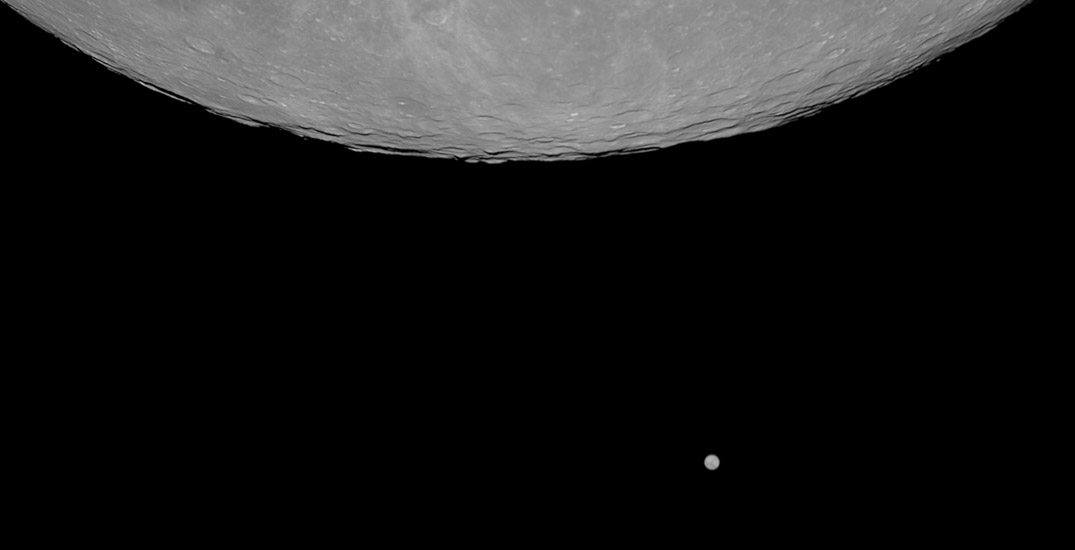
image by Alexandre Csutoros, Québriac, France; north up
Many amateur and professional astronomers have spent their lives fixated on a tiny red dot. It is hard to understand, with the richness of the Moon close at hand, how Mars could have allured so many when, as Alexandre’s image demonstrates, its telescopic appearance is smaller than an inconspicuous lunar crater. This image is more valuable, however, than merely a reminder of the minor status of much of the rest of the observable universe compared to the Moon. This is a grand image of the southern limb that deserves to be annotated as a map of this complex region. So I have. Below is the limb, without the pesky planet, with the main features labeled. South is up because that is the most attractive way to see it. The crater names (placed below the named crater) are IAU names, and the mountain designations (Greek letters) are from Beer & Madler (east of the pole), Neison (west of pole), Whitaker (M 1-6) and Wood (M>7). Because the IAU does not want to deal with Greek lettered features there is no standard for them. Perhaps our usage with create a defacto standard.

Alexandre’s image with names added by Chuck Wood; south up.
Technical Details:
December 24th, 2007, 5:01 to 5:10 am. Meade 8″ + Toucam Pro II; mosaic of 6 images (80 seconds / 10img/s).
Related Link
Alexandre’s Observatory of the Full Moon
Yesterday's LPOD: Marsh of Epidemics
Tomorrow's LPOD: Western Triplet
COMMENTS?
Register, Log in, and join in the comments.



